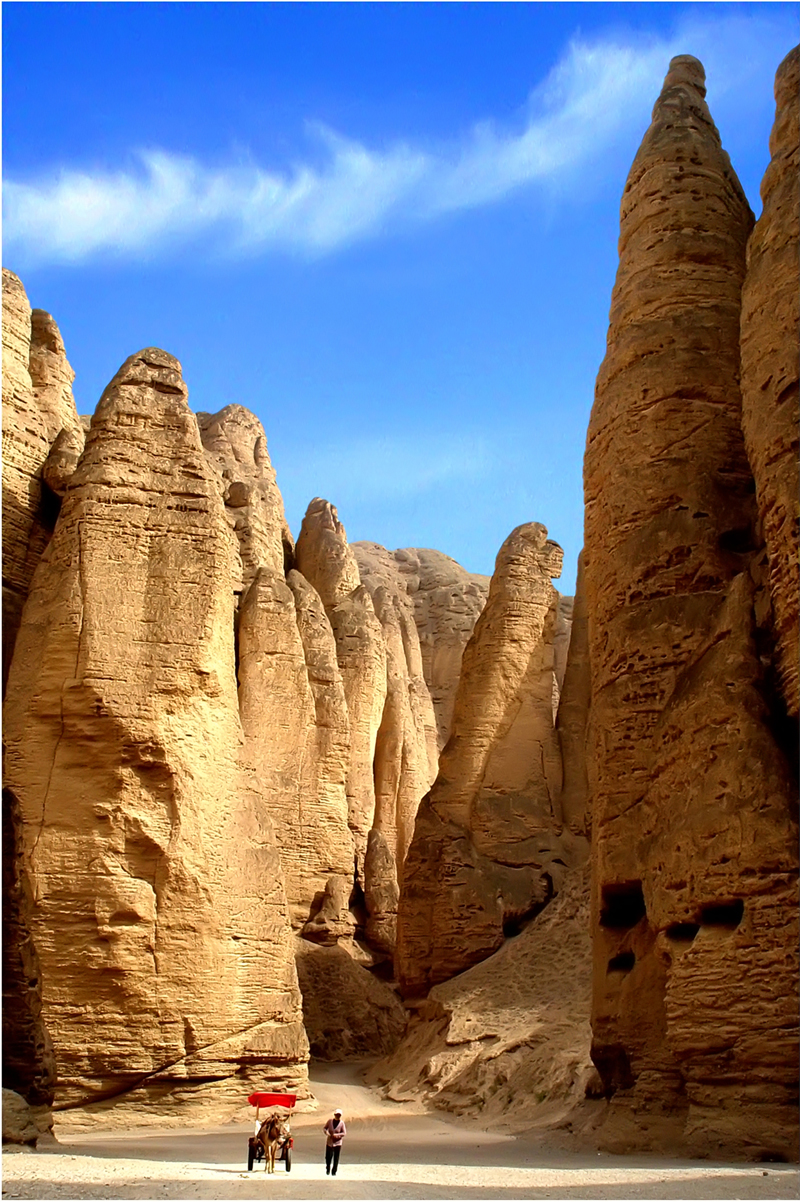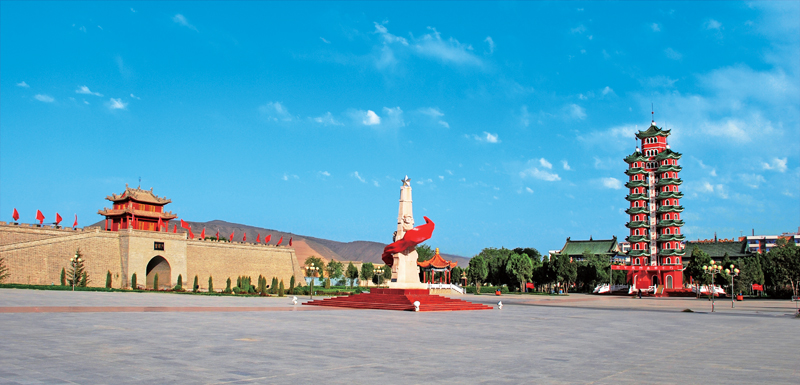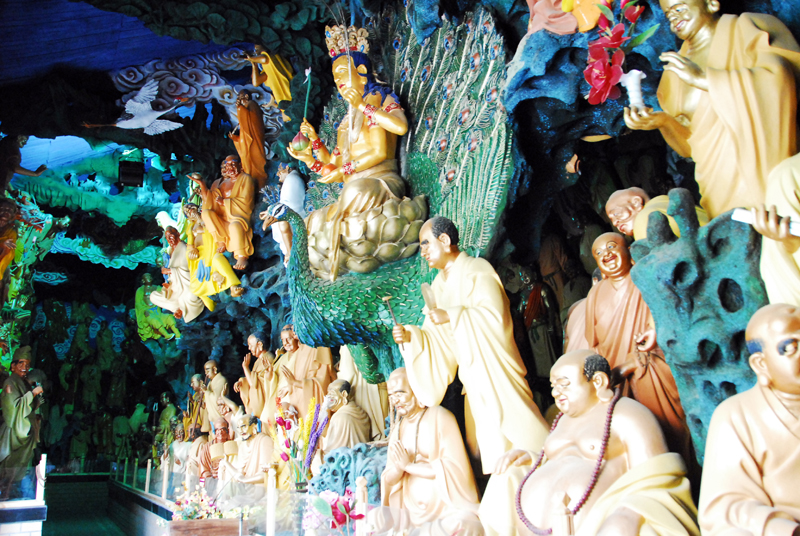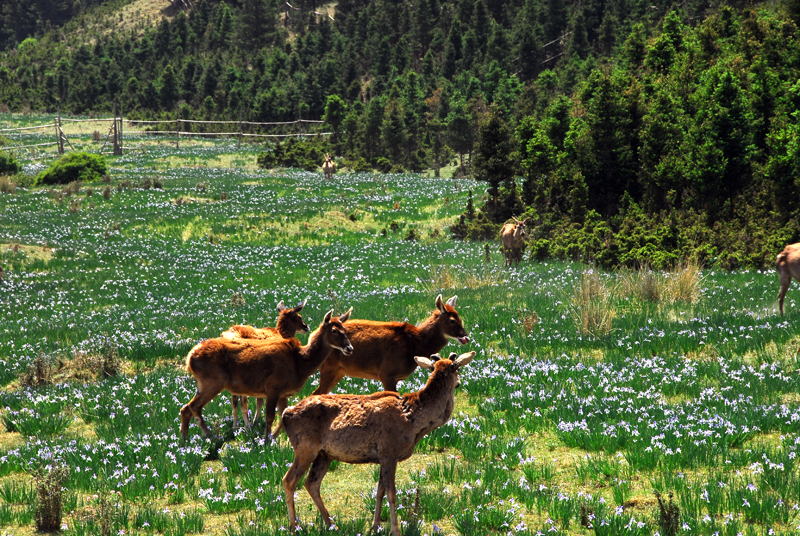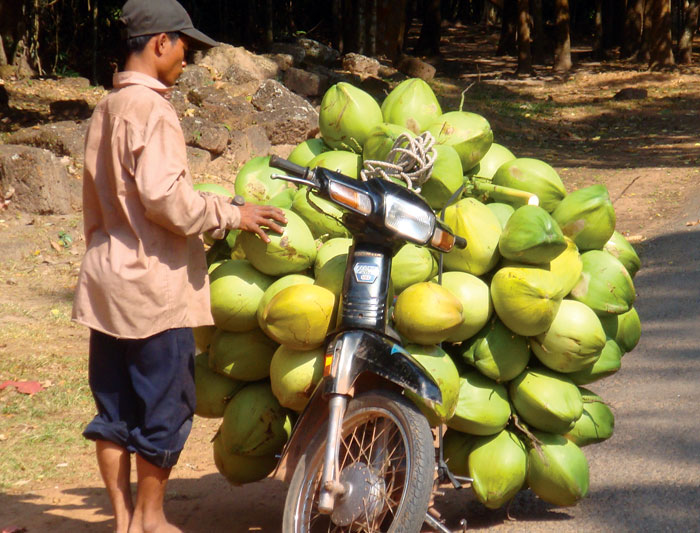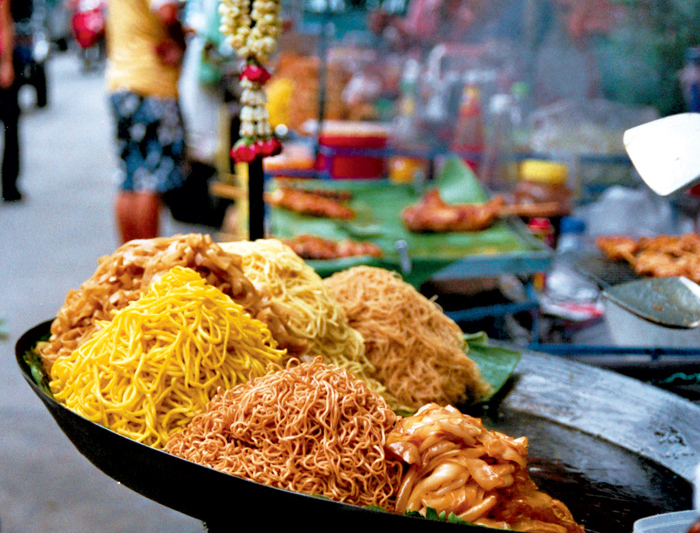Baiyin City
Baiyin City is at the center of Gansu Province, and is also called Copper City. It occupies a converging zone of the Loess Plateau and the Tengger Desert. As a prefect In a narrow shape, Baiyin looks like a peach leaf in map and its southeast is higher than northwest. Traversed by the Yellow River in the middle of the territory, Baiyin has been divided into two parts, the northwest and the southeast. From northwest to southeast, Jingtai, Jingyuan and Huining Baiyin’s resources for tourism development are rich and unique. Yellow River Stone Forest is a national geological park honored as “Chinese natural wonder" The sacred Huining County where the three main Red Armies historically realigned in the Long March, is the base for national patriotism education. There are some prominent scenic spots in Baiyin. The layout of its major tourism sites is “one belt with two wings and one line". One belt is the Scenic Zone along the Yellow River. Along the belt, you can find Jingtai Stone Forest, The Great Gorge, Jingyuan Yellow River Park, Silong Holiday Resort Village, Five Buddhas Temple, North Wudang Mountain, Water wheels and Sheepskin rafts. The two wings are the two sides of the Yellow River. On the northwest is Jingtai County, while on the southeast is Huining County. The natural landscape and red tourism are typical on the two wings -- Shoulu Mountain Changling Mountain, Tiemu Mountain, Quwu Mountain and Hasi Mountain as well as Huining Realignment Tower. One line is the Silk Road crossing from south to north Baiyin, along which are Ancient City Lachila, Guocheng Pass, Faquan Temple, Sierwan Grottoes, Five Buddhas Temple, Tiger City, Luyang City and Hongshuibu Fortress. Ancient cities, passes, grottoes and temples make up the cultural landscape along this line. Jingtai Yellow River Stone Forest (AAAA)
Located in Longwan Village, Jingtai County, Yellow River Stone Forest lies about 70 kilometers north of Baiyin and covers an area of 10 square kilometers. Thanks to the crustal deformation, stone forest landforms with tawny sandy conglomerate can be found here in various sizes and shapes. With steep cliffs and awesome scenery, the stone forest scenic spot looks like an incredible masterpiece made by a great sculptor. A large number of rock pillars and stalagmites in various sizes and shapes can be found everywhere, such as “Guanyin (goodness in Chinese Buddhism) sits in Meditation", “Qu Yuan (a poet in Kingdom of Chu 339 B.C.—278 B.C.) Asks Heaven", “Mulan (a heroine in ancient China) Joins in the Army", “Lovers under the Moon", “Ten Miles of Byobu". As the mother river of Chinese nation, Yellow River takes an S-curve and thus forms a backwater bay here. On the east bank of the Yellow River, visitors can not only appreciate the towering stone forest, but also enjoy the “Dragon Bay Oasis", which faces to the river, and lays against the mountains. Integrated with the Yellow River,Stone Forest, desert, Gobi Desert, oasis, farm villages, Stone Forest Scenic Spot itself is a magnificent landscape. As many famous Chinese TV plays, such as The Myth (Jackie Chan’s movie) and A Story Along the Yellow River, were shot here, Yellow River Stone Forest became more renowned after they were broadcast. The former site of the Red Army’s Joining Forces in Huining County (AAAA)
Located in Huishi Township, Huining County, Gansu Province, the former site of the Red Army’s Joining Forces in Huining County is a revolution site which “Joining Forces Building" was built in the Ming Dynasty, which is the significant evidence of these three armies joining forces in Huining County, as well as the symbol of the old Huining City. In 1986, in honour of the 50th anniversary of the three main forces of the Red Army joining forces in Huining, the Monument of Joining Forces was erected. On the monument, there are 18 forceful characters “The Memorial Tower of the Joining Forces of the First, Second and Fourth Routes of Chinese Red Army", inscribed by Deng Xiaoping. Meanwhile, the Martyrs’ Cemeteries of the Red Army were constructed in Dadunliang and Manniupo of Huining County. In 1996, Huining built “a large collection of stone tablets for the generals of the Red Army’s joining forces." A large number of exhibits like the lanterns and copper pots are displayed in the “Revolutionarily Cultural Artifacts Exhibition Hall of the Red Army’s Joining Forces". Faquan Temple in Jingyuan County (AAA)
Located in Daba Village, Dongwan Township, Jingyuan County, Baiyin City, Gansu Province, the scenery spot Faquan Temple is alongside the No.109 national road, 70 kilometers from Baiyin City. Taoism, Buddhism and Confucianism are integrated in this The total area of Faquan Temple scenery area is 3.86 square kilometres. The building area of this temple is 5,200 square meters. The temple is composed of north part and south part. Built on the slope of a cliff, it looks very majestic. There are more than 60 grotto palaces, such as Gate to the Monastery, the Honorific Arch over the gateway, Kumbu Stupa, Hall of Five Hundred Arhats, Jade Emperor Cave, Queen Mother Palace, Eight Immortals’ Palace, Chamber of Cultural Prosperity, Tianfeng Pagoda and Kuixing Tower. The temple is regarded by Buddhists as a good place for self cultivation and spiritual improvement. It has been renowned as “Faquan, where the Holy spirits impart truth and exert power". Pengze, minister of Military Ministry of the Ming Dynasty, studied in this place. In modern times, Zhang Daqian, Yu Youren, Heyu and some other cultural celebrities visited the ancient temple and left here with their own calligraphy. There are three springs named “Longgu" “Mochi" and “Yueya". Famen Temple of Shaanxi Province is honored to be the upper house in Northwest China, and Faquan Temple humbly labels itself the lower house. From “Famen" and “Qingquan (clear springs)", the initial character in the former and the second character of the latter thus make up the name “Faquan Temple". It was built in the Northern Wei Dynasty and prospered in the Tang and Song Dynasties. In each succeeding dynasty, the rehabilitation and rebuilding works never ceased. In the early years of the Tang Dynasty, General Yuchi Jingde reconstructed Faquan Temple. In the fifth year under the reign of Emperor Chongning in the Song Dynasty (1106), the emperor approved Faquan Temple to be the Upper Zen Temple and Jingyun Temple of Xi’an the Lower Zen Temple. Suffering several turmoils of war, the temple was renovated and expanded in 1988. Today the buildings are preserved well. In the 1960s, the national first-class cultural relics Si Ku Quan Shu (the Complete Library in the Four Branches of Literature) was kept here. The Event of “Buddha’s Birthday" is held here on every April 8th of the lunar calendar. And there is a dharma assembly on Ghost Festival, July 15th of the lunar calendar. Shoulushan Forest Park(AAA)
Shoulushan Forest Park is located in Zhangzhuang Village, Sitan Township of Jingtai County, covering an area of 1086 hectares. It is 39 kilometers west of Jingtai. The park, in the transitional zone between the Tengger Desert and the Loess Plateau, is surrounded by Gobi desert, and enjoys the reputation of “Green island in the Gobi." The park has such scenic spots as Yantian Feixue (snow in sunny days), Shenque Platform, Cedar Park, Fairy Lunv’s Meadow, Sunset in Desert etc., as well as thirteen newly built scenic spots of the Honorific Arch over the gateway, Deer Viewing Deck, Fairy Cave, Bridge on the Cliff, Cloud-high Ladder Path, Zhenwu Temple, FangYuan Pavilion, Fairy Lunv Pavilion, the Long Corridor, Mushroom Pavilion Artificial Lake, Deer Park, Rainbow-shaped Bridge, Rainbow Bridge. |
Baiyin City
December 21, 2016
VIEWED: 0
Recommended Products
see all-
Best of Vietnam & Cambodia
HKD 2130 + Book -
Cambodia & Thailand Traveller
HKD 2220 + Book

